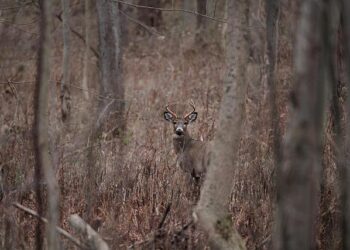The Devastating Effects of Wildfires on the Ecosystem of San Bernardino National Forest
The recent wildfires in San Bernardino National Forest have had a significant impact on its ecology, leading to the displacement of wildlife in the area. The rampant fires have not only caused widespread destruction but have also forced many animal species to flee their habitats.
Loss of Habitat and Displacement of Wildlife
The intense wildfires have resulted in the destruction of large tracts of vegetation, leading to a loss of habitat for numerous species. This has forced animals to seek alternative areas for shelter and food, disrupting their natural behavior and survival strategies.
Erosion and Soil Degradation
In addition to habitat loss, wildfires also contribute to erosion and soil degradation. The burning of vegetation leaves the soil exposed, making it vulnerable to erosion by wind and water. This leads to an increased risk of landslides and mudflows during heavy rainfall, further impacting the ecosystem.
What practical tips can individuals follow to contribute to wildlife conservation efforts in the San Bernardino National Forest?
Title: Wildlife in San Bernardino National Forest Forced to Flee Due to Line Fire’s Ecological Impact
Meta Title: The Line Fire’s impact on Wildlife in San Bernardino National Forest
Meta Description: Learn about the ecological impact of the Line Fire on the wildlife in San Bernardino National Forest and the efforts being made to mitigate the damage.
Introduction
The San Bernardino National Forest is home to a diverse range of wildlife, including bobcats, mountain lions, black bears, and a variety of bird species. However, in recent years, the ecosystem has faced significant challenges due to wildfires. Among these, the Line Fire has had a particularly devastating impact on the wildlife in the area, prompting many species to flee their natural habitats.
Impact on Wildlife
The Line Fire, which started in the vicinity of Lytle Creek in the San Bernardino National Forest, has had a profound impact on the forest’s wildlife. The fire, fueled by dry vegetation and strong winds, spread rapidly, engulfing thousands of acres of land and destroying numerous habitats. As a result, many animals have been forced to flee the area in search of new, suitable environments.
The ecological impact of the Line Fire on the wildlife in San Bernardino National Forest is significant. The fire has led to loss of habitat, food sources, and shelter for numerous species, resulting in displacement and, in some cases, death. Additionally, the loss of vegetation has disrupted the delicate balance of the ecosystem, impacting the availability of food and water for wildlife.
Efforts to Mitigate Damage
In response to the ecological impact of the Line Fire, various organizations and agencies have been working together to mitigate the damage and support the affected wildlife. These efforts include:
- Habitat Restoration: Restoration projects aimed at regenerating the natural habitat and replanting vegetation to provide food and shelter for wildlife.
- Wildlife Monitoring: Ongoing monitoring of wildlife populations to assess the impact of the fire and ensure the well-being of the animals.
- Conservation Initiatives: Educational programs and public outreach to raise awareness about the importance of protecting wildlife and preserving their natural habitats.
- Collaboration with Local Communities: Working with local communities to develop strategies for coexisting with wildlife and minimizing the likelihood of future wildfires.
Case Studies
The impact of the Line Fire on wildlife in San Bernardino National Forest is exemplified by the struggle of the mountain lion population. These majestic creatures, which play a vital role in maintaining the ecological balance, have faced challenges due to the destruction of their habitat. Many mountain lions have been forced to venture into urban areas in search of food and shelter, leading to potential conflicts with humans and safety concerns for both the animals and residents.
First-hand Experience
Local wildlife conservationists and researchers have witnessed the impact of the Line Fire on the forest’s wildlife firsthand. Their efforts to assess and address the damage caused by the fire have shed light on the urgent need for proactive measures to protect and preserve the natural habitat of the area’s wildlife.
Benefits and Practical Tips
The restoration and preservation of the natural habitat in the San Bernardino National Forest offer numerous benefits, including the protection of endangered species, the enhancement of biodiversity, and the promotion of ecotourism. Additionally, individuals can contribute to wildlife conservation efforts by adopting practices such as responsible camping, refraining from littering, and supporting local conservation organizations.
the Line Fire has had a profound ecological impact on the wildlife in San Bernardino National Forest, underscoring the need for continued efforts to protect and preserve the natural habitat of the area’s diverse species. By raising awareness, implementing conservation initiatives, and supporting wildlife rehabilitation, we can work collectively to mitigate the damage caused by wildfires and ensure the well-being of the forest’s wildlife.
Air and Water Quality
Wildfires can also significantly affect air and water quality in the area. The smoke produced by the fires can result in poor air quality, posing health risks to both humans and wildlife. Furthermore, ash and debris from the burnt vegetation can contaminate water sources, affecting aquatic life in rivers and streams.
Regeneration Challenges
Following a wildfire, regenerating plant life faces numerous challenges due to disrupted soil structures. This impacts not only vegetation but also the animals that depend on it for food and shelter.
Mitigating Future Risks
To mitigate future risks from wildfires it is crucial that forest management strategies are implemented including controlled burns or prescribed fires as well as creating firebreaks within susceptible areas within San Bernardino National Forest , which could help reduce fuel loads thus preventing uncontrolled spread if future fires occur.nnBy taking these proactive measures we can better protect this delicate environment while simultaneously safeguarding its diverse wildlife population.































